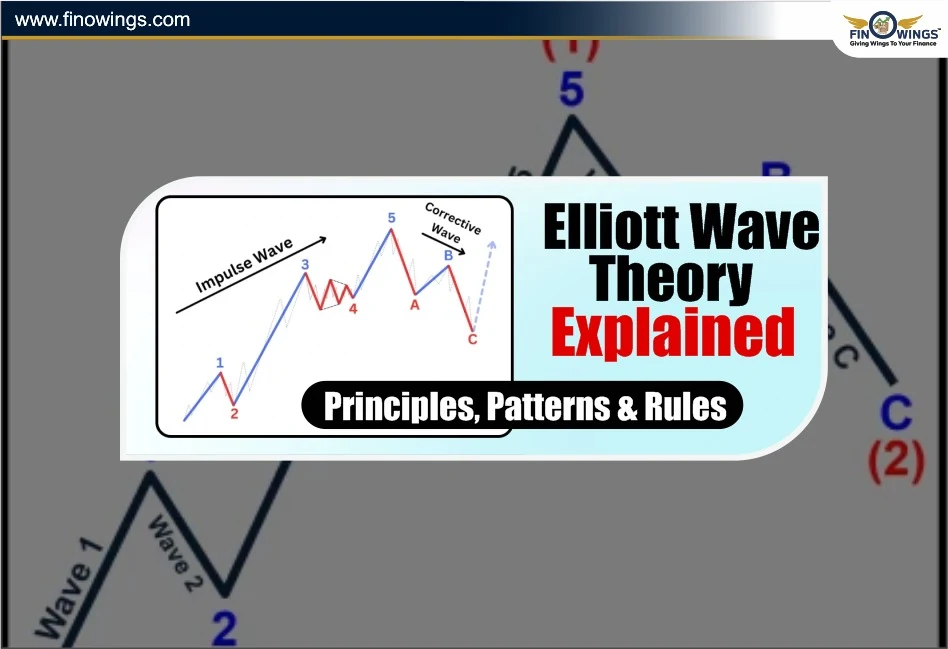Home >> Blog >> What Is the Pitchfork Indicator? Meaning, Formation & Strategies
What Is the Pitchfork Indicator? Meaning, Formation & Strategies

Table of Contents
- What Is a Pitchfork Indicator?
- Formation of the Pitchfork Chart Pattern
- How Pitchfork Works: Pitchfork Analysis
- Pitchfork Technical Analysis in Trading
- Benefits of the Pitchfork Indicator
- Drawbacks of the Pitchfork Indicator
- Pitchfork Trading Techniques
- Best Practices for Using the Pitchfork Indicator
- Conclusion
As a trader, you have a set of tools you rely on to make accurate predictions on trends, prices, and prices at different levels. One of the popular tools is the Pitchfork Indicator. This is a different method of charting your trends and serves to predict possible support, resistance, and points when a trend may reverse.
Greens or seasoned traders may want to learn different Pitchfork indicators as advanced tools will improve pitchfork stock analysis and will help improve the identification of profitable points to enter and exit the market.
What Is a Pitchfork Indicator?
The Pitchfork Indicator or Andrews’ Pitchfork as it is commonly called is a trend-channel tool developed by Dr. Alan Andrews. It has three parallel lines - a median line and two outer trend lines. This is based on three important price points which can be three points a trader is analysing - a high, low, and a retracement.
One of the three points will be the base of the pitchfork chart pattern. Visually, it looks like a pitchfork. Pitchfork technical analysis enables a trader to see a trend and predict movement by forecasting future support levels and resistance from previous market swings.
Formation of the Pitchfork Chart Pattern
There are three major pivot points in the pitchfork chart pattern construction:
-
1. Point A (Median Start). This is the first major pivot (high or low) that is considered.
-
2. Point B is the next opposite pivot after A.
-
3. Point C is the third pivot in the opposite direction of B.
-
After identifying these three points on the chart:
-
The Median Line is drawn from Point A through the midpoint of Points B and C.
-
Two Parallel Lines (Upper and Lower Pitchfork Lines) are drawn on either side of the median line at equal distances.
-
These three lines contain the price movements. The price moves in the upper and lower channels and approaches these lines or pivot points.
(Source: TradingView)
How Pitchfork Works: Pitchfork Analysis
Pitchfork Analysis involves the idea that price moves away from the median line and then returns to it.
When price movements reach the Upper Parallel Line, it tends to act as a resistance before retracting to the median line.
When price movements reach the Lower Parallel Line, it tends to act as a support and bounce back upward. The median line also captures the attention of the price - most corrections or consolidations tend to revolve around it.
Therefore, pitchfork analysis helps assess the trend's direction and strength visually.
Pitchfork Technical Analysis in Trading
The pitchfork indicator helps different trading users like equities, forex, commodities, and indices to find trend channels and reversal zones.
Here’s a practical use case of how pitchfork technical analysis is applied:
1. Identifying Trend Direction
If the lines of the pitchfork are inclined to the top, the trend is bullish. If the slope of the pitchfork is downward, the trend is bearish.
2. Determining Entry and Exit Points
Near the bottom parallel line, traders will buy since it is support and they will sell close to the top line since it is resistance.
3. Measuring Trend Strength
The strength of the trend is indicated by the distance of the price from the median line. Healthy momentum is indicated by repetitive bouncing around the median line.
4. Forecasting Price Reversals
A pitchfork channel breakout signals a potential trend reversal or continuation.
Example of How to Use Pitchfork in Stock Analysis
Let's try an example of pitchfork stock analysis.
Imagine XYZ Ltd. stock creates three main pivots.
- A: A swing low of ₹1,000.
- B: A swing high of ₹1,300.
- C: A retracement low of ₹1,150.
Once these pivots are identified, the pitchfork tool can be used. The median line goes from point A and crosses through the middle of points B and C. The upper parallel and lower parallel lines are potential resistance and support zones. If the price action gravitates towards the median line and the price hinges around the range of the parallel lines, the trader can pinpoint the entry and exit levels.
Benefits of the Pitchfork Indicator
- Visual Clarity – The pitchfork makes the prevailing market trend and channel boundaries easy to see.
- Dynamic Support & Resistance – The pitchfork lines adjust and move with the trend.
- Early Reversal Signals – The indicator identifies potential breakout or breakdown levels before the move really starts.
- Adaptable Tool – Pitchfork analysis can be used on different timeframes and various asset classes.
Drawbacks of the Pitchfork Indicator
-
Similar to any other technical tool, pitchfork analysis has limitations.
-
Accurate pivot point selection is critical; for analyses not to become skewed, the right pivot points must be chosen.
-
It favours trending markets; stability will yield poor results.
-
Other methods should be included for confirmation; these could be the RSI, MACD, and/or volume analysis.
-
Pitchfork stock analysis can be accurate but needs to be integrated with other technical analysis for the best results.
Pitchfork Trading Techniques
Let's take a look at some practical pitchfork technical analysis strategies used by traders.
1. Median Line Strategy
-
During an uptrend, buy close to the lower line and aim for the median line.
-
During a downtrend, sell close to the upper line and aim for the median line.
-
This is best used for channels in which the price is oscillating cleanly.
2. Breakout Strategy
A new trend is about to begin when the price breaks through the upper or lower pitchfork lines in either direction with a surge in volume. Using candlestick patterns or a surge in volume can help confirm the breakout.
3. Reversal Bounce Strategy
If the price touches the lower line several times and fails to break, this indicates strong support. Traders can go long with a stop loss set below the line.
Best Practices for Using the Pitchfork Indicator
-
To get more reliable indications, use longer timeframes (daily/weekly).
-
Combine momentum tools (like RSI or MACD) with the pitchfork indicator.
-
When a major new swing occurs, be sure to readjust pivot points.
-
Do not overfit the lines - pay attention to the market’s natural rhythm.
Conclusion
For trend-based trading, the Pitchfork Indicator offers great insight as it helps visualise market rhythm, trend direction, and likely reversal points. Whether it’s in pitchfork stock analysis or across other markets, the technique of this pitchfork technical analysis helps to improve your timing and risk management considerably.
Traders learn what is a pitchfork indicator and use it with other confirmation tools, to develop a disciplined strategy that keeps them ahead of the market.
By combining Elliott Wave Theory with Pitchfork analysis, you may improve your market analysis even further. Wave counts and median lines together can produce extremely precise trading setups, as our Elliott Wave Theory blog illustrates.
















